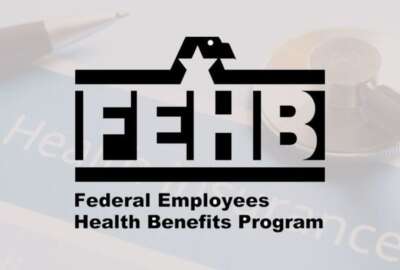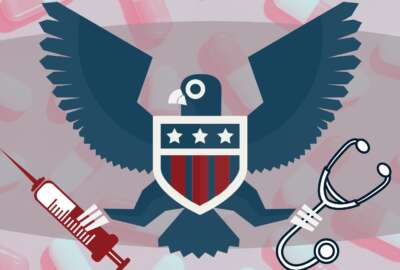Hubbard Radio Washington DC, LLC. All rights reserved. This website is not intended for users located within the European Economic Area.
OPM tells FEHB carriers to prepare for USPS health program’s launch
Alongside preparations for the 2025 plan year for FEHB, OPM outlined clearer plans for implementing the Postal Service Health Benefits program.
The Office of Personnel Management is already telling health insurance carriers in the Federal Employee Health Benefits (FEHB) program to get ready for a unique Open Season this fall.
In preparation for the 2025 plan year, OPM for the first time outlined clearer plans to implement the Postal Service Health Benefits (PSHB) program in January.
For years, OPM’s annual call letter to carriers has focused solely on setting the stage for the upcoming FEHB plan year. But OPM’s latest letter details the implementation of PSHB, the new health insurance program for the roughly 1.2 million Postal Service employees, annuitants and their families.
A special enrollment period beginning April 1 as well as the upcoming Open Season this fall will be the first time Postal employees and annuitants will be able to enroll in the brand-new health insurance program, mandated by the Postal Service Reform Act that President Joe Biden signed into law in 2022.
Any FEHB carrier that wants to apply to offer plans in the PSHB program must submit their proposal of benefits and rates by May 31, OPM said. Then enrollees in the new PSHB program will begin receiving coverage on the first day of 2025.
“OPM welcomes all PSHB carrier applicants and looks forward to launching this new program with you,” OPM Associate Director for Healthcare and Insurance Laurie Bodenheimer said in the Feb. 8 call letter.
More details about PSHB program
OPM’s February call letter gives more indication of how the PSHB program and enrollment window for Postal employees and annuitants will work. But there may be even more changes in the coming months.
One major difference for feds in plan year 2025 once again deals with Medicare Part D — the section of Medicare that provides prescription drug coverage. Part D already saw significant uptake within FEHB this year. For 2024, 17 FEHB plans offered a Part D plan.
But starting in 2025, that number could become much bigger.
That’s because any FEHB carrier that offers a PSHB plan has to provide prescription drug coverage through Part D for Postal annuitants who have Medicare, said Kevin Moss, editor of the Consumers’ Checkbook Guide to Health Plans for Federal Employees.
“This is how Postal annuitants will actually receive their prescription drug coverage,” Moss said in an interview. “And every PSHB plan will have to have a Part D plan in order to provide that prescription drug coverage.”
Moss said he expects that because of the new Medicare Part D requirement, almost every FEHB plan will likely have Part D prescription drug coverage available to annuitants for 2025, mirroring the setup for PSHB.
That’s highly important for both FEHB participants and future PSHB enrollees to consider since those with Medicare will be auto-enrolled into a Part D plan. OPM lets FEHB carriers to auto-enroll their Medicare members in a Part D plan as long as there’s an easy way to opt out.
In most cases, Medicare Part D enrollment will be beneficial to FEHB and PSHB participants. But there are certain scenarios, Moss said, where annuitants should keep a close eye on the changes.
Enrollees who have weight loss drug prescriptions, for example, may see some limitations under a Medicare Part D plan.
Every FEHB plan has to cover at least one type of GLP-1 weight loss drugs, which are often used to treat Type 2 diabetes. But by law, Medicare does not provide coverage of those drugs, which can cost $15,000 — sometimes even more — out of pocket.
Annuitants who get auto-enrolled into a Part D plan may lose coverage of weight loss drugs they initially had under their FEHB plan.
“That’s a very strong reason for you to opt out,” Moss said. “Federal annuitants will need to do their homework this fall to see how Part D will impact them and to determine if they’ll be better off with Part D or FEHB prescription drug coverage.”
Another part of the Postal Service Reform Act requires the PSHB program to offer the same benefits between comparable FEHB and PSHB plans. Even though the benefits will be the same, the cost to the enrollee will likely differ.
“The rates are going to be different because the Postal Service employees and annuitants are going to be a new coverage entity, separate from all other federal employees and annuitants,” Moss said. “We don’t yet know what impact that will be. We do expect that those rates will be different, but we don’t know if they are going to be higher or lower.”
But the number of plan options will likely be smaller, Moss added, because of certain requirements for carriers. Any health plan for the government has to have a minimum of 1,500 “covered lives,” which could impact what types of plans will be available in the PSHB based on population size.
Fertility coverage, member eligibility, other priorities
In its call letter, OPM additionally emphasized that carriers should continue to prioritize coverage of gender affirming care and services, maternal health, fertility, obesity management, mental health and substance use disorder treatment, as well as telehealth benefits, into 2025 and beyond.
OPM has prioritized those areas of coverage for at least the last few years. FEHB saw changes for the 2024 plan year, for instance, with new requirements for health carriers to provide coverage of certain infertility treatments.
Now, OPM is also looking at ways to reduce and prevent misuse of opioids, Moss said.
Additionally, OPM’s call letter referenced plans aiming to improve the way FEHB tracks member eligibility in the program. That comes after the Government Accountability Office reported in 2023 that OPM may be spending up to $1 billion annually on ineligible FEHB participants. GAO said OPM does not currently have a clear way to identify and remove FEHB enrollees’ family members who are erroneously part of the program.
In the new call letter, Bodenheimer said carriers are responsible for tracking and preventing fraud, waste and abuse in the program — including rooting out ineligible members.
“Carriers and employing offices share the responsibility to ensure family member eligibility, recognizing that coverage of ineligible family members can lead to improper payments, including erroneous or fraudulent claims,” Bodenheimer said.
Carriers have to verify eligible family members when FEHB participants add new members to their plans, Bodenheimer said.
Using lessons learned for the future FEHB
The upcoming PSHB enrollment period and plan year for 2025 will have major ripple effects on the government’s health care programs on the whole. OPM Deputy Director Rob Shriver said the new central enrollment platform OPM created for PSHB will eventually serve as a template to potentially restructure the FEHB program.
“We’re building that system to be a model for FEHB modernization over the long term,” Shriver said in an interview with Federal News Network in January. “We’ve been working with stakeholders across the government, with the health plans, with Postal employees, to design this system in a way that takes advantage of the advances in technology. It will both improve the customer service experience for Postal workers and their families, and also will allow for more efficient and effective administration of the program. This is really a great opportunity for us to roll out a new system that’s built the right way for this population and for this purpose.”
To try to get ahead of potential pitfalls in launching such a massive program, Shriver said OPM is planning to roll out a “robust decision support tool.” The tool is meant to help Postal employees evaluate their health plan options and make the most informed health care insurance decisions based on their health needs.
“We’ll have a robust customer service program in place to handle a large influx of questions,” Shriver said. “It’s a new approach. People are going to have questions and we want to make sure we’re ready to handle those.”
Copyright © 2024 Federal News Network. All rights reserved. This website is not intended for users located within the European Economic Area.
Drew Friedman
Drew Friedman is a workforce, pay and benefits reporter for Federal News Network.
Follow @dfriedmanWFED
Related Stories
Ineligible members in FEHB program may cost OPM nearly $1B annually, GAO says
Related Topics




